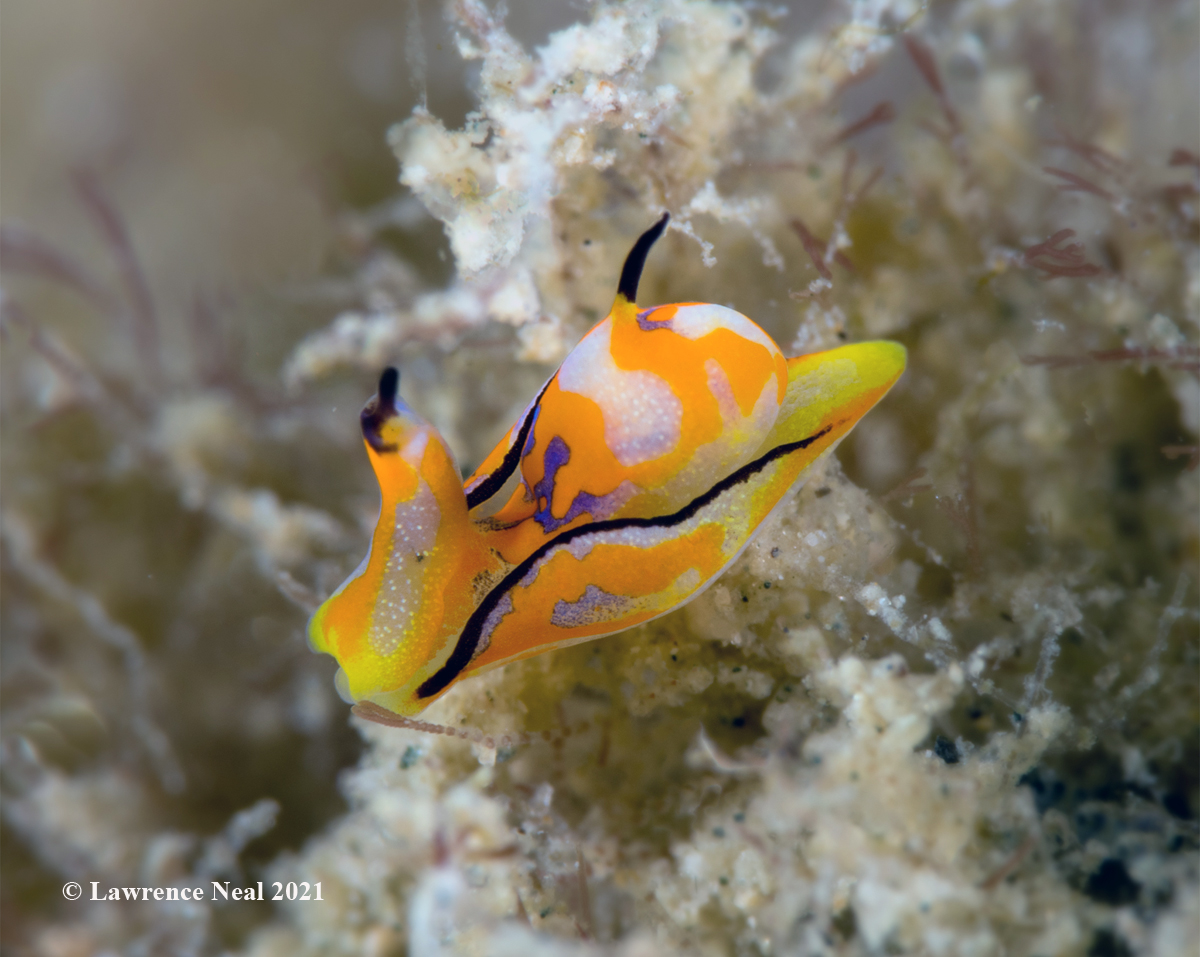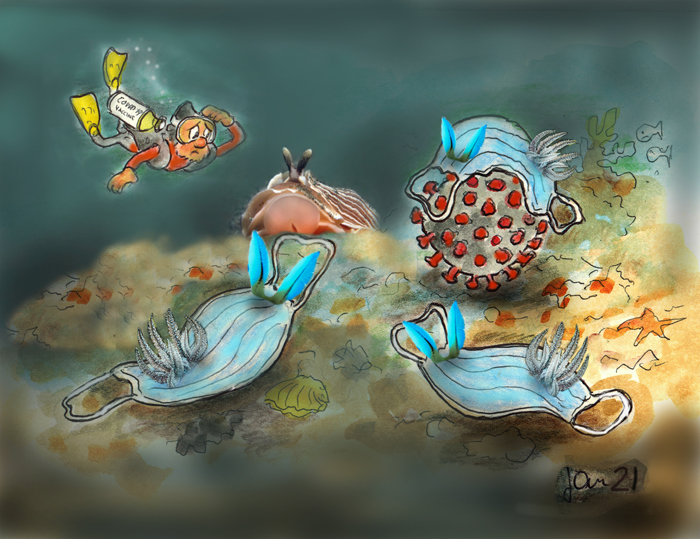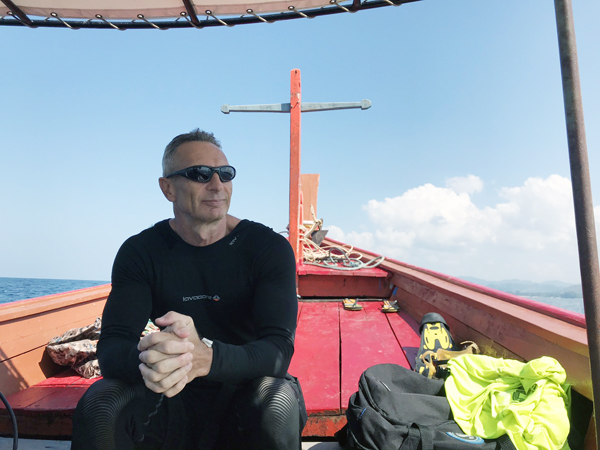 |
Image courtesy of Lawrence Neal
Andaman Sea of Western Thailand
Image courtesy of Jan Kocian |
Siphopteron nigromarginata Gosliner 1989 Wow - It's been a year since Covid 19 changed all of our lives. Most of us have not been able to dive or even explore a tide pool. It is hard to imagine how this has changed all of our lives. I have now written some 50 plus "Branch of the Week" from my man cave upstairs in our Sammamish home, without getting my feet wet. What the Hell? I am grateful that Webmaster Mike hangs in there and keeps posting this site so even when we can't dive, we can still enjoy our slug buddies. AND thanks to guys like Jan Kocian who keep producing these wonderful memories and cartoons - boosting our spirits and keeping us optimistic that things will improve. Times like this make us wonder how we could have even overlooked a sea slug as beautiful as this Siphopteron. This extremely beautiful Cephalaspidean is also extremely variable in coloration. NSSI 2nd edition shows two variations but Lawrrence's critter here is absolutely off the chart. Wow - Gorgeous. Terry's name "nigromarginatum" gives away its most important external characteristic - the black pigment along the margin of the parapodia and the flagellum, the pointed appendage above the internal shell. The medial ridge within the siphon on the head is also black. The parapodia of this species do not overlap, exposing some of its internals. As you can see the coloration can be quite complicated with yellow and white specks over the body and orange and sometimes purplish-blue pigment on the visceral mass. |
Dave Behrens
Sammamish, WA 98074
Mar., 2021
Send Dave email at davidwbehrens@gmail.com
Lawrence Neal

Lawrence Neal is a newspaper journalist based in Bangkok, Thailand. He escapes the office as often as he can to go diving in the rich waters of the Indo-Pacific but his regular dive sites are just down the road at Pattaya. The vis is usually pretty appalling and the diversity nothing like as rich as hotspots like Lembeh or Anilao, but, in his words, "that's what makes it challenging and fun".
Lawrence uses a Nikon D850 with 105 mm Nikkor lens ISO 64, 1/250 sec., f20, 2 X Backscatter Mini Flash MF-1 strobes.
Lawrence Neal
Send Lawrence mail at lorenzo_n@yahoo.com |

Attention all you Sluggers, and you know who you are! The NSSI 2nd edition is now available in ebook PDF and book form . The hard back version will become available Nov. 1st. Both will cost $65 (individually). You will need to jump through a few hoops to get the electronic version as pdf distribution is protected by Adobe ID!! Please read the following to enable reading your electronic purchase! This new 2nd Edition is updated and reorganized, including 185 new species. Among other features, the new edition includes additional photographs of species, an identification key, and an up-to-date classification reflecting the latest evolutionary relationships. The Indo-Pacific represents the largest expanse of tropical ocean in the world, stretching from the Indian Ocean coast of southern Africa and the Red Sea to the central Pacific of the Hawaiian Islands, Easter Island and the Marquesas. This region supports the most diverse marine fauna of any place in the world for most groups of marine organisms. The nudibranchs and sea slugs are no exception to this rule; there are about 3,000 described species of these organisms in the world and at least 40% of these have been found exclusively in the Indo-Pacific tropics. This book illustrates 2,138 Indo-Pacific nudibranchs and sea slugs, including many undescribed species.
|

|
